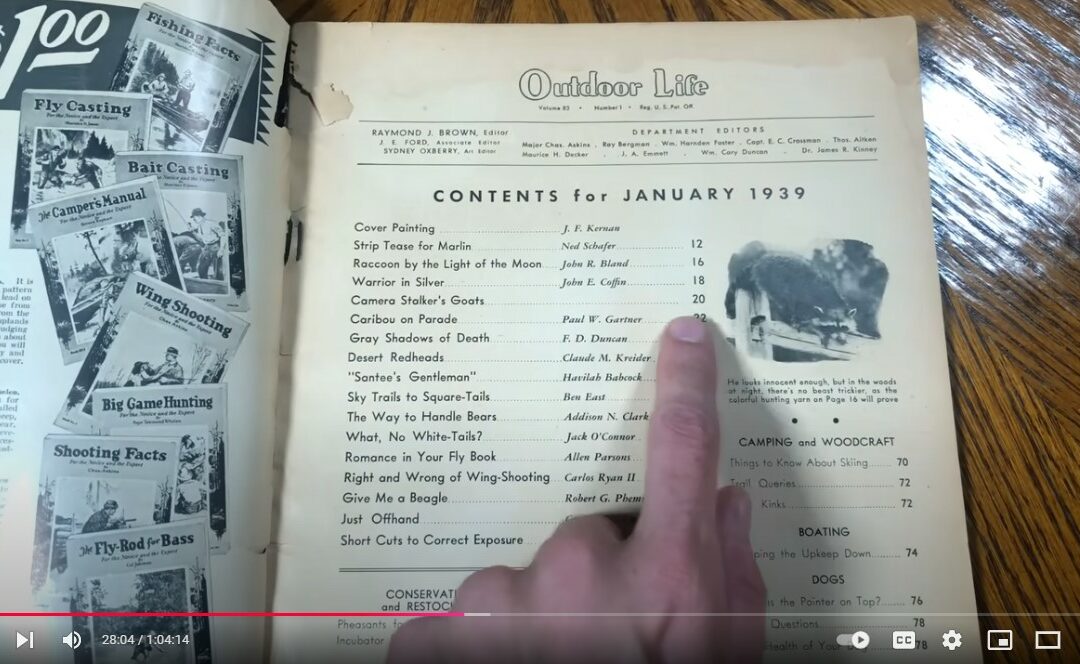It’s embarrassing that it took a guy from New York to teach me a cool piece of ecological history in a local spot I’ve been to multiple times. And via YouTube, no less – egad!
The spot is Dublin Pond, also called Dublin Lake, which is halfway between Peterborough and Keene perfect for casual kayaking. The New Yorker, from Binghamton not the Big Apple, is named Caelan Kelley with a one-man YouTube channel called Atlas Pro. And the biological history involves the silver trout, an almost-certainly-extinct species that I had never heard of.
I’m not alone in my ignorance, it seems. One comment under his video is even from a ranger at Monadnock State Park who says the story of the silver trout was news to them. As part of his research, Kelley went to Christine Lake near Groveton, one of two places where this species was once known to exist. “I talked to people at Christine Lake and none of them knew what I was talking about. Not a single person knew about the silver trout, and they were old-timers,” Kelley told me.
So how did Kelley learn about it? From an earlier video.
The Atlas Pro channel holds more than 120 of his videos that he has made about “geography, geology, biology, and ecology” over five years, with titles ranging from “Is there a rainforest in West Virginia?” to “Antibiotic resistance” to “Why species don’t exist.”
The silver trout video is a sort of spin-off from earlier work on extinct North American species. As Kelley explained it, he hopes to do a video about every one of them and decided to start with an example a few hours from home, the silver trout.
The last confirmed sighting of this smaller relative of the brook trout was in Dublin Pond in 1930, so that’s where he headed.
Before we get to that search, a word about his excellent video, which runs just over an hour. I say excellent both because of content and appearance.
It could easily have been made by a documentary team with a tight script, good pacing and plenty of research, presented with production values that WMUR-TV would be happy to emulate. Yet Kelley, 27, who has a degree in environmental science rather than anything in digital production, says he did the whole thing himself using standard software packages: the drone shots, the cool animations, the underwater videos, the voice-overs and the studio shots of him talking. For those of us who remember splicing Super-8 film (am I dating myself?) it’s a startling example of what modern video technology can do.

It’s also an example of modern video journalism from a business standpoint. Kelley says he started the channel in college and it has produced his only income since he graduated via YouTube’s ad algorithms plus donations via platforms like Patreon. No media company or support staff are involved.
I am used to hearing about financial success from solo video channels involving porn or fake outrage and hate speech. Seeing it happen with local ecology and history is a very pleasant surprise.
Now back to the ecology.
The silver trout was never numerous or widespread, only found in two New Hampshire ponds, but it was sufficiently recognized that there was debate a century ago whether it was a species or not. Nonetheless, by 1939, Kelley reported, New Hampshire Fish and Game surveyed the Connecticut River watershed without finding a single one.
What happened?
With help from Milo Rossi, another environmental-focused YouTuber, Kelley explores the question, starting with why silver trout never seemed to exist outside a couple of small, separated ponds. One possible scenario: They were stranded in those ponds when huge Ice Age lakes disappeared as the glaciers retreated, and isolation turned them into a separate species.
He also discusses why the silver trout disappeared. Reasons include overfishing once Europeans arrived – the video includes eye-popping details of backing a truck into the lake and loading up the bed with fish – plus competition from introduced species such as the rainbow trout and bass. Those stresses could easily have been fatal to a species that existed only in small, isolated populations.
There’s also the possibility that silver trout cross-bred with other types of trout, meaning its DNA may lurk in modern fish even if the species is gone.
The video ends with a bit of philosophizing as Kelley walks among some lake-bottom boulders that exactly match descriptions of silver trout spawning areas from a century ago.
“There’s something about seeing a very real and tangible space where an extinct animal once lived and reproduced … (which) made this seem very real. As if I was looking at the ruins of someone’s old home that had burned down,” he mused.
More importantly, Kelley asked in the video, could the fish still be lurking somewhere in the waters of New Hampshire?
Spoiler alert: Not that he could find in a few days of paddling and wading and filming, although his efforts are well worth watching: “To make it rewarding you have to see the failures, too.”
Kelley says the real hope is that the video will be a spur for others. “I’m just some guy with a GoPro … one person with a very limited set of skills,” he told viewers in the video. “Now that you too know exactly where and when to find this fish, more people can take part in trying to find silver trout.”
Even if you don’t find the silver trout – and you probably won’t – it’s a great excuse to get out on the water.
And if you do find something, I want to hear about it!


 Return to the Concord Monitor
Return to the Concord Monitor